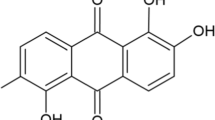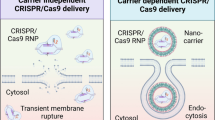Abstract
Background
Cancer stem cells play important roles in the process of tumorigenesis. Our research group obtained cancer stem cell-like cells named Piwil2-iCSCs by reprogramming human preputial fibroblasts (FBs) with the PIWIL2 gene, but the mechanism of Piwil2-iCSCs is still unclear.
Methods
We sequenced the piRNAs, miRNAs and mRNAs of Piwil2-iCSCs and FBs, and analyzed the differences. Gene Ontology (GO) and, Kyoto Encyclopedia of Genes and Genomes (KEGG) enrichment analyses and gene set enrichment analysis (GSEA) were performed on the differentially expressed (DE) mRNAs. In addition, we analyzed the variable shear events and fusion genes in the Piwil2-iCSCs. Target gene prediction and functional enrichment analysis were performed for the DE miRNAs.
Results
A total of 1119 DE mRNAs, 220 DE piRNAs, and 440 DE miRNAs were obtained between the Piwil2-iCSCs and FBs. Functional enrichment analysis showed that the genes with upregulated expression were mainly involved in DNA repair, mismatch repair, base excision repair, and nucleotide excision repair. Genes with downregulated expression were mainly involved in the TGF-β receptor signaling pathway, senescence and autophagy in cancer. More frequent shear events occurred in Piwil2-iCSCs and FBs, especially in intron retention (IR) events. We also identified three fusion genes MCM3AP-C21orf58, LRRFIP2-CAV3 and TMEM184B-DMC1. Enrichment analysis of DE miRNAs showed that they were associated with apoptosis, the TGF-β signaling pathway, and the stem cell regulatory signaling pathway. In particular, target gene prediction of the top three miRNAs with upregulated expression showed that they targeted SMAD, GREM1 and other genes to participate in the regulation of TGF-β and other pathways.
Conclusion
PIWIL2-induced cancer stem cells have significantly altered levels of miRNAs, piRNAs and mRNAs.TGF-β, autophagy, apoptosis and other pathways may play an important role in stem cell development. The occurrence of alternative splicing and fusion genes may be related to the occurrence of cancer stem cells.





Similar content being viewed by others
Data availability
The datasets used or analyzed during the current study are available from the corresponding author on reasonable request.
References
Hewitt HB (1958) Studies of the dissemination and quantitative transplantation of a lymphocytic leukaemia of CBA mice. Br J Cancer 12(3):378–401
Hamburger AW, Salmon SE (1977) Primary bioassay of human tumor stem cells. Science (New York, NY) 197(4302):461–463
Pierce GB, Wallace C (1971) Differentiation of malignant to benign cells. Can Res 31(2):127–134
Pierce GB, Speers WC (1988) Tumors as caricatures of the process of tissue renewal: prospects for therapy by directing differentiation. Can Res 48(8):1996–2004
Bussolati B, Bruno S, Grange C, Ferrando U, Camussi G (2008) Identification of a tumor-initiating stem cell population in human renal carcinomas. FASEB J 22(10):3696–3705
Yan Y, Zuo X, Wei D (2015) Concise review: Emerging role of CD44 in cancer stem cells: a promising biomarker and therapeutic target. Stem Cells Transl Med 4(9):1033–1043
Weng Z, Lin J, He J, Gao L, Lin S, Tsang LL et al (2021) Human embryonic stem cell-derived neural crest model unveils CD55 as a cancer stem cell regulator for therapeutic targeting in MYCN-amplified neuroblastoma. Neuro Oncol. https://doi.org/10.1093/neuonc/noab241
Majeti R (2011) Monoclonal antibody therapy directed against human acute myeloid leukemia stem cells. Oncogene 30(9):1009–1019
Lee JW, Lee HY (2021) Targeting cancer stem cell markers or pathways: a potential therapeutic strategy for oral cancer treatment. Int J Stem Cells 14(4):386
Kuramochi-Miyagawa S, Kimura T, Ijiri TW, Isobe T, Asada N, Fujita Y et al (2004) Mili, a mammalian member of piwi family gene, is essential for spermatogenesis. Development (Cambridge, England) 131(4):839–849
Sasaki T, Shiohama A, Minoshima S, Shimizu N (2003) Identification of eight members of the Argonaute family in the human genome. Genomics 82(3):323–330
Doxzen KW, Doudna JA (2017) DNA recognition by an RNA-guided bacterial Argonaute. PLoS ONE 12(5):e0177097
Azlan A, Dzaki N, Azzam G (2016) Argonaute: the executor of small RNA function. J Genet Genomics 43(8):481–494
Wang S, Li F, Fan H, Xu J, Hu Z (2019) Expression of PIWIL2 in oral cancer and leukoplakia: prognostic implications and insights from tumors. Cancer Biomark 26(1):11–20
Feng D, Yan K, Liang H, Liang J, Wang W, Yu H et al (2021) CBP-mediated Wnt3a/β-catenin signaling promotes cervical oncogenesis initiated by Piwil2. Neoplasia (New York, NY) 23(1):1–11
Zhao X, Huang L, Lu Y, Jiang W, Song Y, Qiu B et al (2021) PIWIL2 interacting with IKK to regulate autophagy and apoptosis in esophageal squamous cell carcinoma. Cell Death Differ 28(6):1941–1954
Li J, Xu L, Bao Z, Xu P, Chang H, Wu J et al (2017) High expression of PIWIL2 promotes tumor cell proliferation, migration and predicts a poor prognosis in glioma. Oncol Rep 38(1):183–192
Qu X, Liu J, Zhong X, Li X, Zhang Q (2015) PIWIL2 promotes progression of non-small cell lung cancer by inducing CDK2 and Cyclin A expression. J Transl Med 13:301
Zhang D, Wu X, Liu X, Cai C, Zeng G, Rohozinski J et al (2017) Piwil2-transfected human fibroblasts are cancer stem cell-like and genetically unstable. Oncotarget 8(7):12259–12271
Bonnet D, Dick JE (1997) Human acute myeloid leukemia is organized as a hierarchy that originates from a primitive hematopoietic cell. Nat Med 3(7):730–737
Lee J, Kotliarova S, Kotliarov Y, Li A, Su Q, Donin NM et al (2006) Tumor stem cells derived from glioblastomas cultured in bFGF and EGF more closely mirror the phenotype and genotype of primary tumors than do serum-cultured cell lines. Cancer Cell 9(5):391–403
Adikrisna R, Tanaka S, Muramatsu S, Aihara A, Ban D, Ochiai T et al (2012) Identification of pancreatic cancer stem cells and selective toxicity of chemotherapeutic agents. Gastroenterology 143(1):234–245
Abbaszadegan MR, Bagheri V, Razavi MS, Momtazi AA, Sahebkar A, Gholamin M (2017) Isolation, identification, and characterization of cancer stem cells: a review. J Cell Physiol 232(8):2008–2018
Takahashi K, Yamanaka S (2006) Induction of pluripotent stem cells from mouse embryonic and adult fibroblast cultures by defined factors. Cell 126(4):663–676
Shahali M, Kabir-Salmani M, Nayernia K, Soleimanpour-Lichaei HR, Vasei M, Mowla SJ et al (2013) A novel in vitro model for cancer stem cell culture using ectopically expressed piwil2 stable cell line. Cell J 15(3):250–257
Valencia-González HA, Ruíz G, Ortiz-Sánchez E, García-Carrancá A (2019) Cancer stem cells from tumor cell lines activate the DNA damage response pathway after ionizing radiation more efficiently than noncancer stem cells. Stem Cells Int 2019:7038953
Abad E, Civit L, Potesil D, Zdrahal Z, Lyakhovich A (2021) Enhanced DNA damage response through RAD50 in triple negative breast cancer resistant and cancer stem-like cells contributes to chemoresistance. FEBS J 288(7):2184–2202
Yu Y, Liu D, Liu Z, Li S, Ge Y, Sun W et al (2018) The inhibitory effects of COL1A2 on colorectal cancer cell proliferation, migration, and invasion. J Cancer 9(16):2953–2962
Wang L, Wang W, Xu Y, Wang Q (2020) Low levels of SPARC are associated with tumor progression and poor prognosis in human endometrial carcinoma. Onco Targets Ther 13:11549–11569
Seoane J, Gomis RR (2017) TGF-β family signaling in tumor suppression and cancer progression. Cold Spring Harb Perspect Biol 9(12):a022277
Colak S, Ten Dijke P (2017) Targeting TGF-β signaling in cancer. Trends Cancer 3(1):56–71
Prieto F, Egozcue J, Forteza G, Marco F (1970) Identification of the Philadelphia (Ph-1) chromosome. Blood 35(1):23–27
Zhang Y, Qian J, Gu C, Yang Y (2021) Alternative splicing and cancer: a systematic review. Signal Transduct Target Ther 6(1):78
Pan Q, Shai O, Lee LJ, Frey BJ, Blencowe BJ (2008) Deep surveying of alternative splicing complexity in the human transcriptome by high-throughput sequencing. Nat Genet 40(12):1413–1415
Yang L, Sun H, Guo L, Cao H (2021) MiR-10a-5p: a promising biomarker for early diagnosis and prognosis evaluation of bladder cancer. Cancer Manag Res 13:7841–7850
Romero-Lorca A, Novillo A, Gaibar M, Gilsanz M, Galán M, Beltrán L et al (2021) miR-7, miR-10a and miR-143 expression may predict response to bevacizumab plus chemotherapy in patients with metastatic colorectal cancer. Pharmacogenomics Pers Med 14:1263–1273
Kang J, Huang X, Dong W, Zhu X, Li M, Cui N (2021) MicroRNA-1269b inhibits gastric cancer development through regulating methyltransferase-like 3 (METTL3). Bioengineered 12(1):1150–1160
Acknowledgements
That all authors are in agreement with the content of the manuscript.
Funding
The present study was supported by the Special Project of Science and Technology Innovation for Social Undertakings and Livelihood Guarantee of Chongqing (Grant Nos. cstc2019jscx-tjsbX0003 and cstc2017shmsA130103).
Author information
Authors and Affiliations
Contributions
Conceptualization: [TM, XT, ZZ and DH]; Data curation: [TM, XT, ZZ and LJ]; Formal analysis: [TM, XT, JW and XW]; Funding acquisition: [DH]; Methodology: [TM, XT, ZW, ML and CZ]; Writing—original draft: [TM, XT and ZZ]; Resources: [DH]; Supervision: [DH].
Corresponding author
Ethics declarations
Conflict of interest
The authors declare that they have no competing interests.
Ethical approval
The Authors declare that the paper is being submitted for consideration for publication in Molecular Biology Reports, that the content has not been published or submitted for publication elsewhere.
Additional information
Publisher's Note
Springer Nature remains neutral with regard to jurisdictional claims in published maps and institutional affiliations.
Supplementary Information
Below is the link to the electronic supplementary material.
Supplementary file1 (TIF 125 KB)
Fig. SF1 The PCA of miRNAs, piRNAs and mRNAs.
Rights and permissions
About this article
Cite this article
Tan, X., Mi, T., Zhang, Z. et al. Multiple transcriptome analysis of Piwil2-induced cancer stem cells, including piRNAs, mRNAs and miRNAs reveals the mechanism of tumorigenesis and development. Mol Biol Rep 49, 6885–6898 (2022). https://doi.org/10.1007/s11033-022-07237-z
Received:
Accepted:
Published:
Issue Date:
DOI: https://doi.org/10.1007/s11033-022-07237-z




